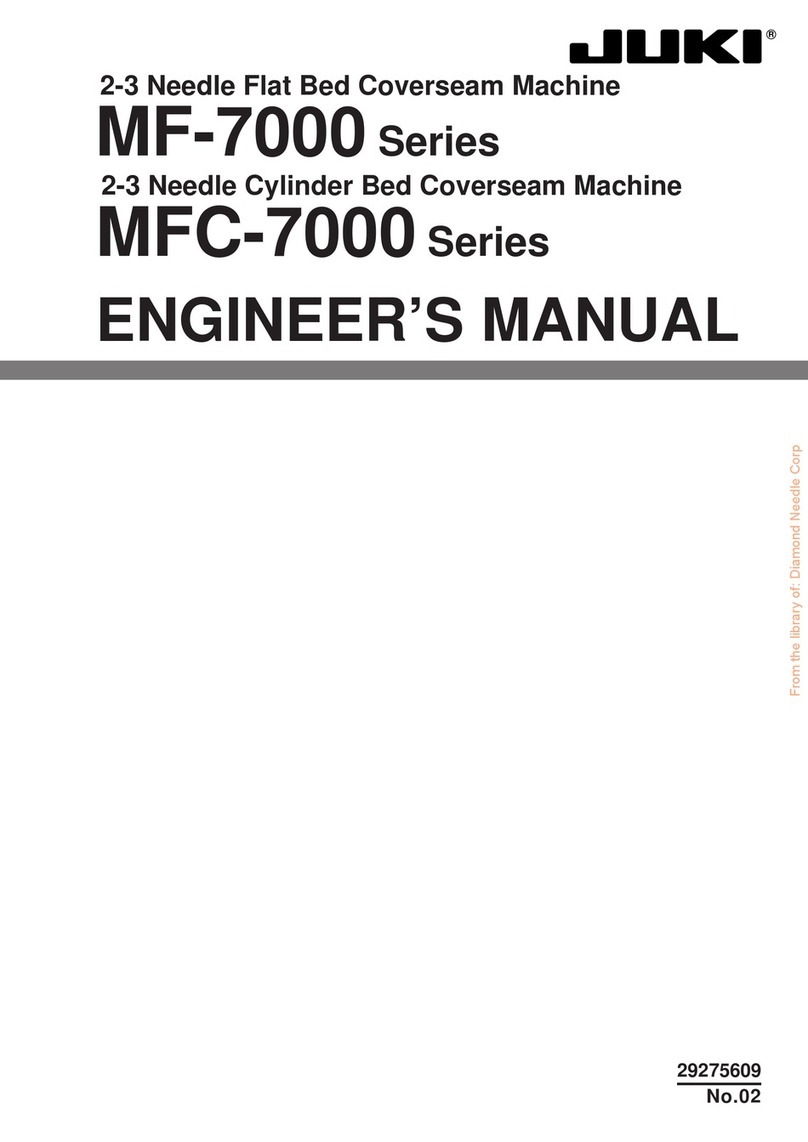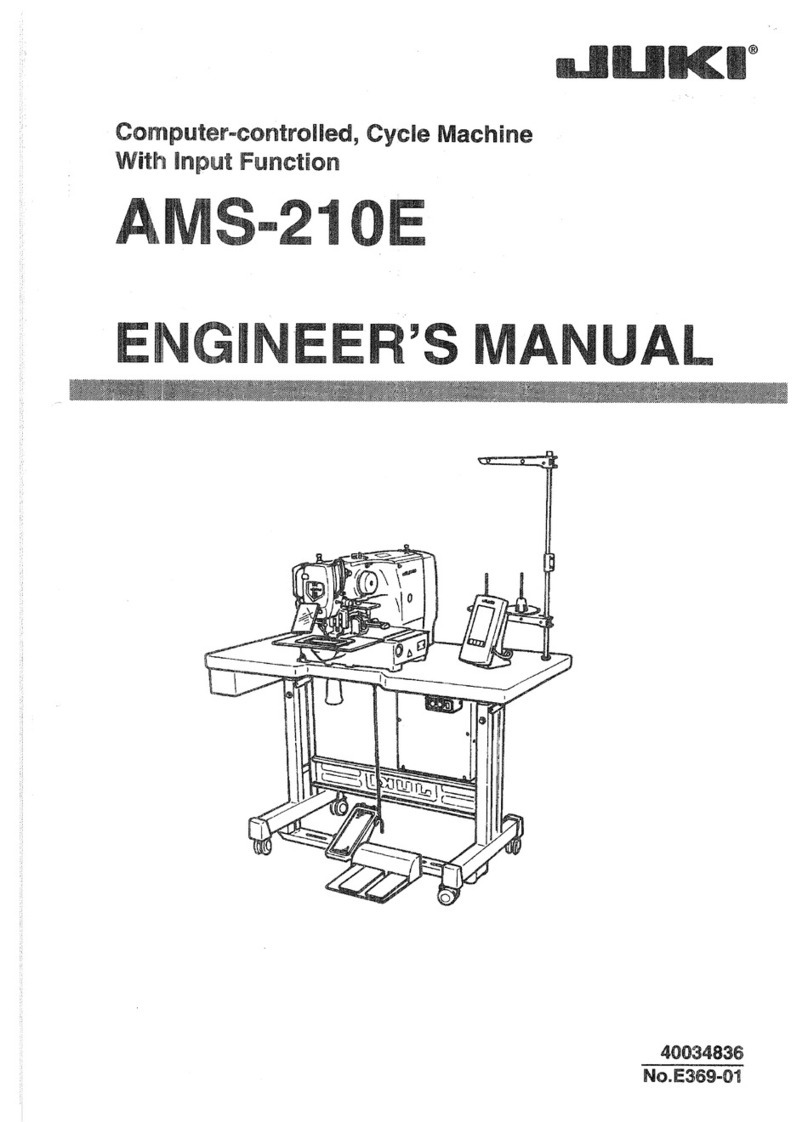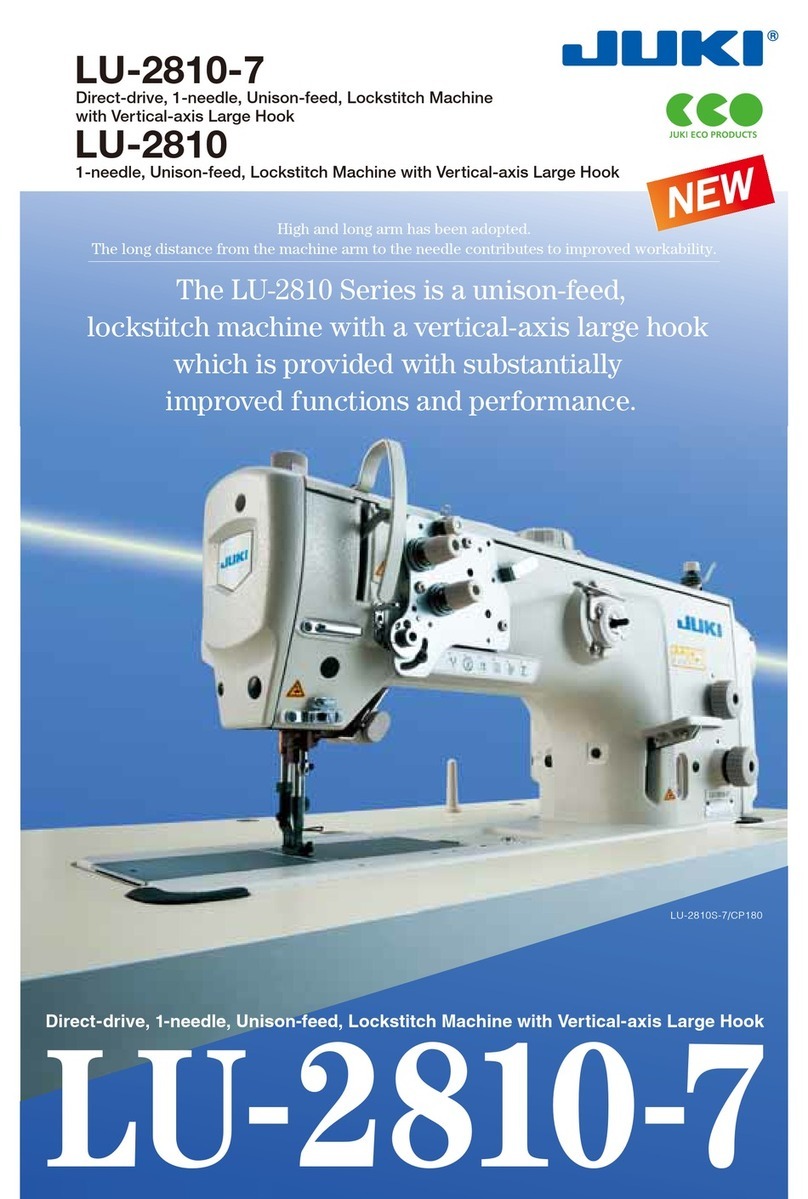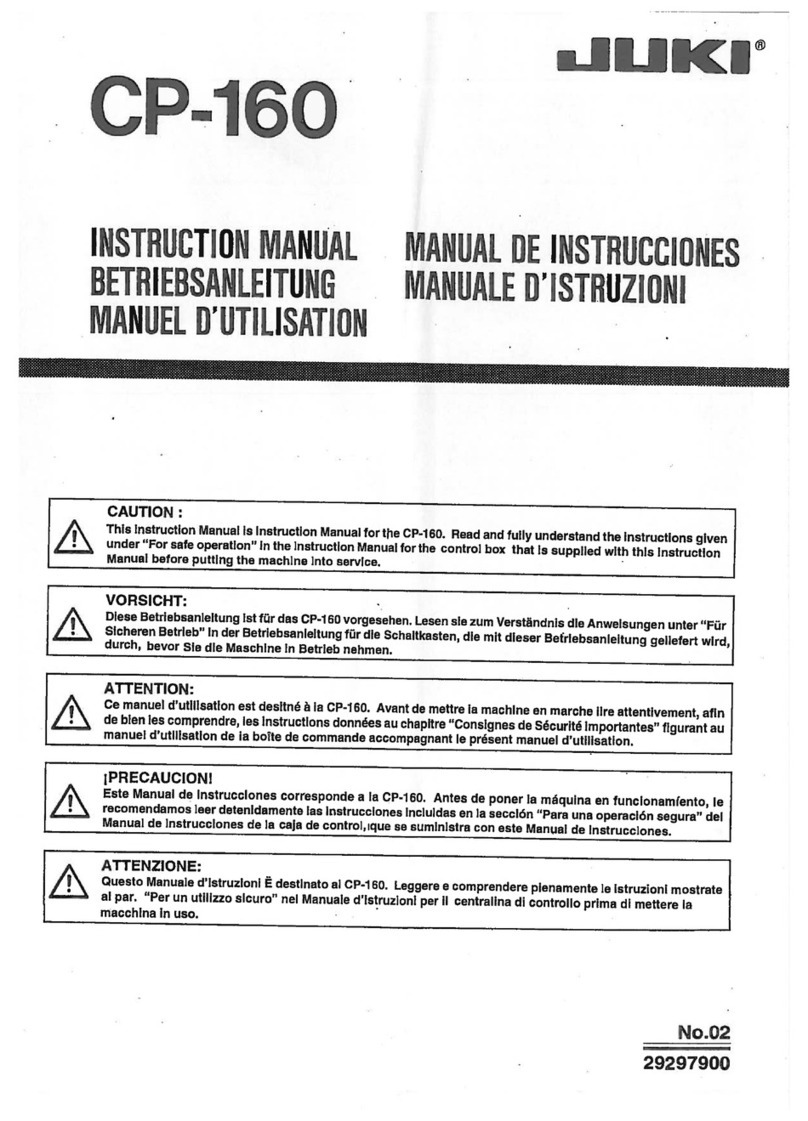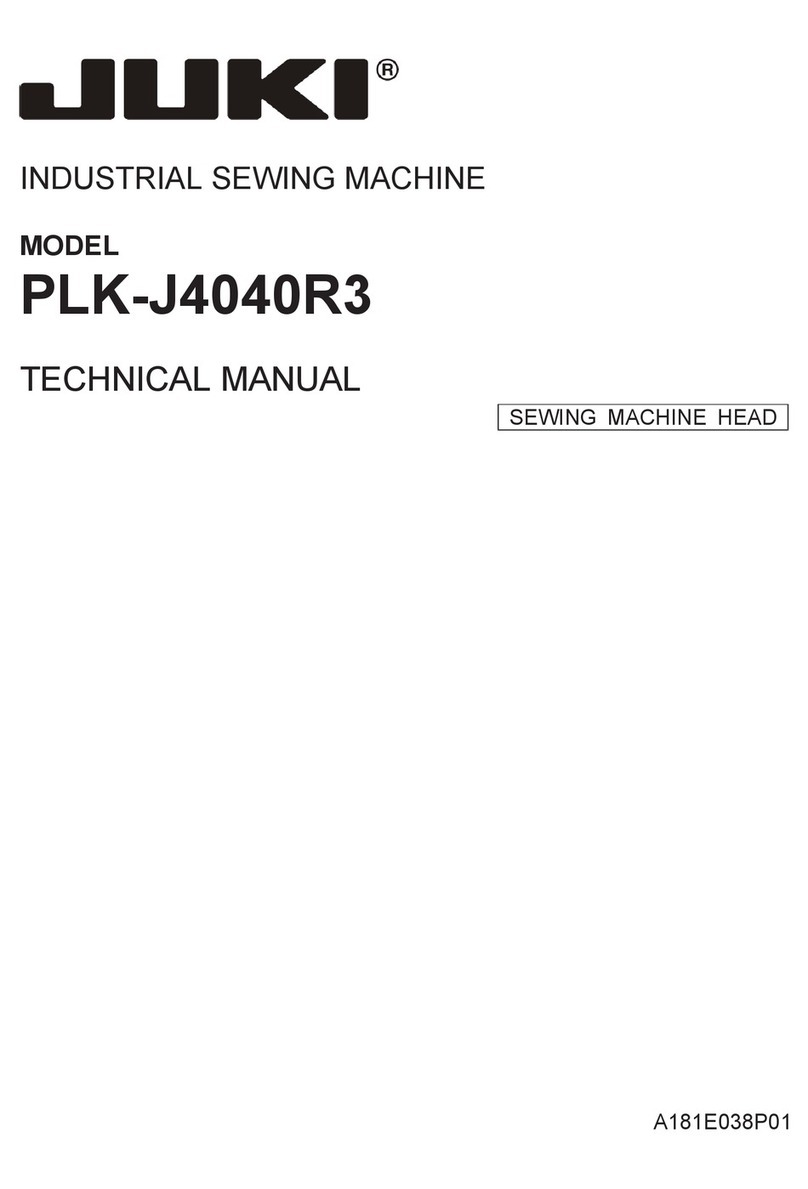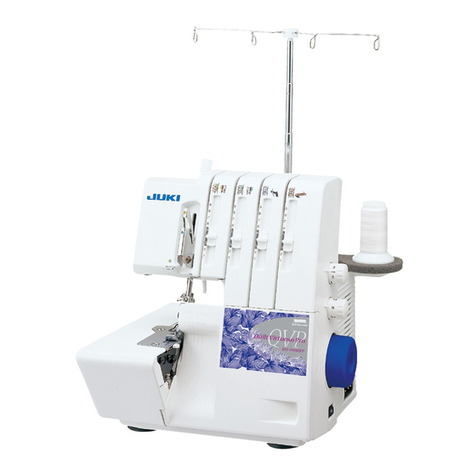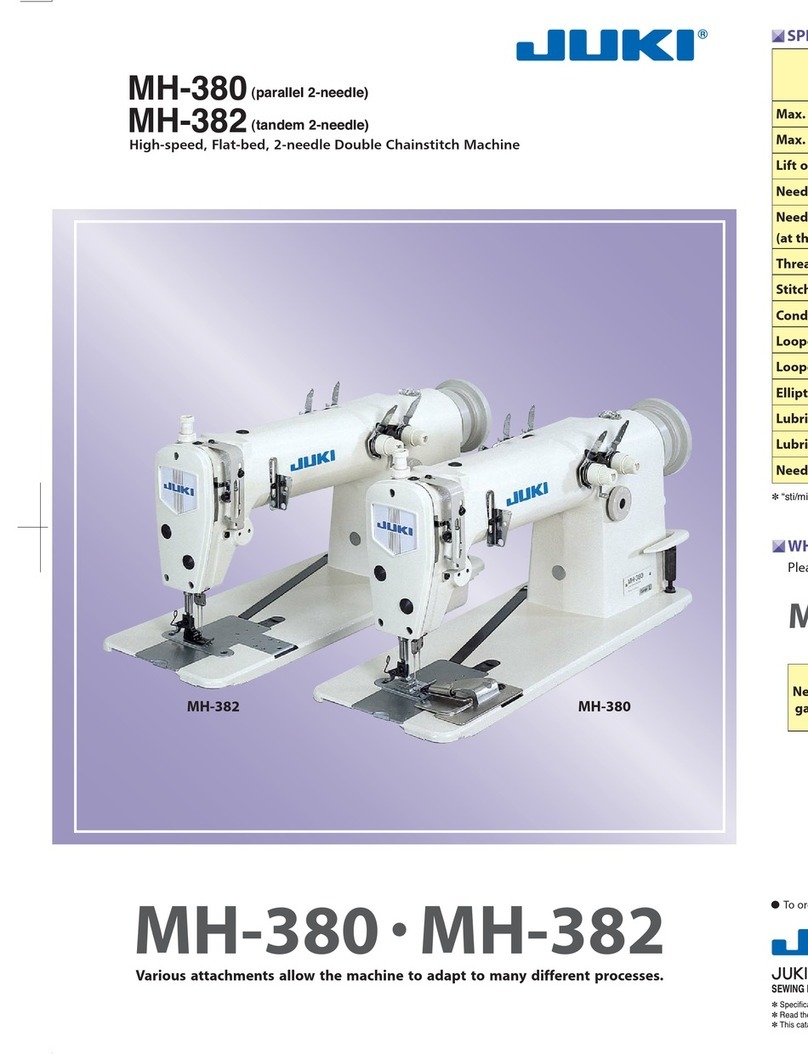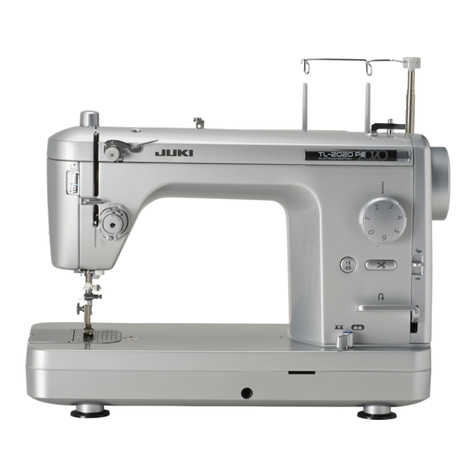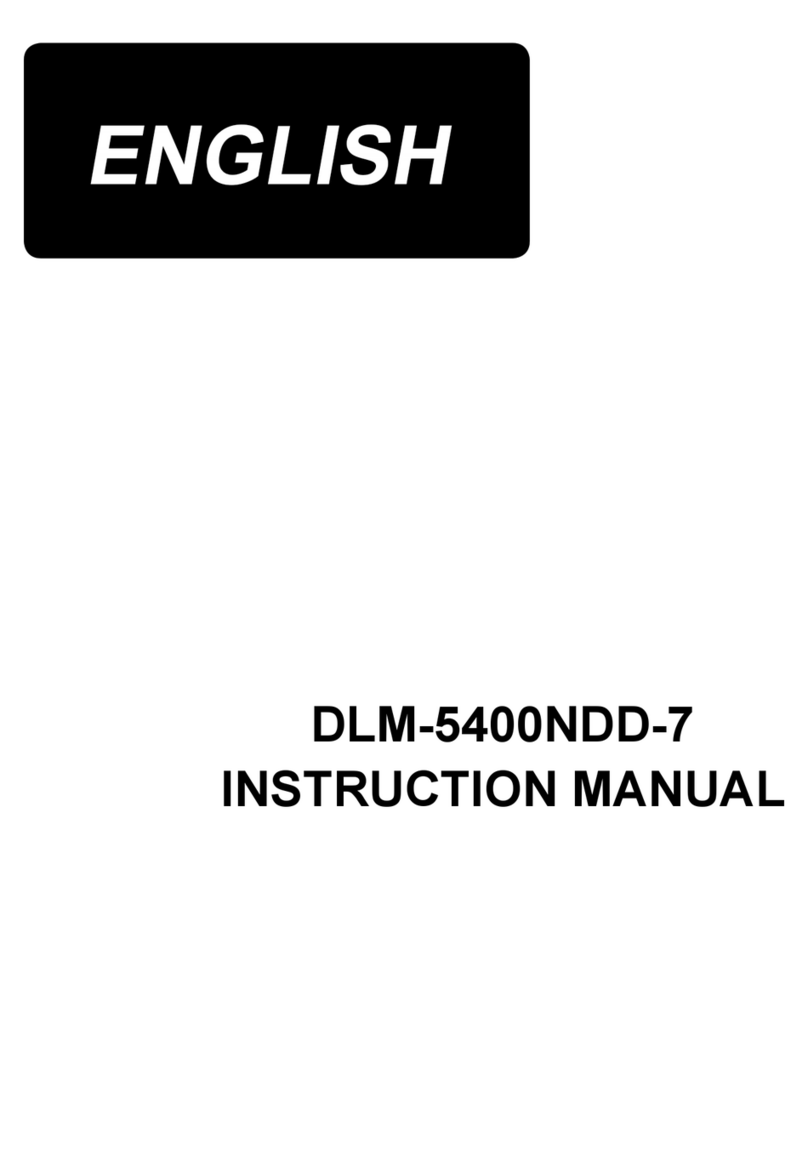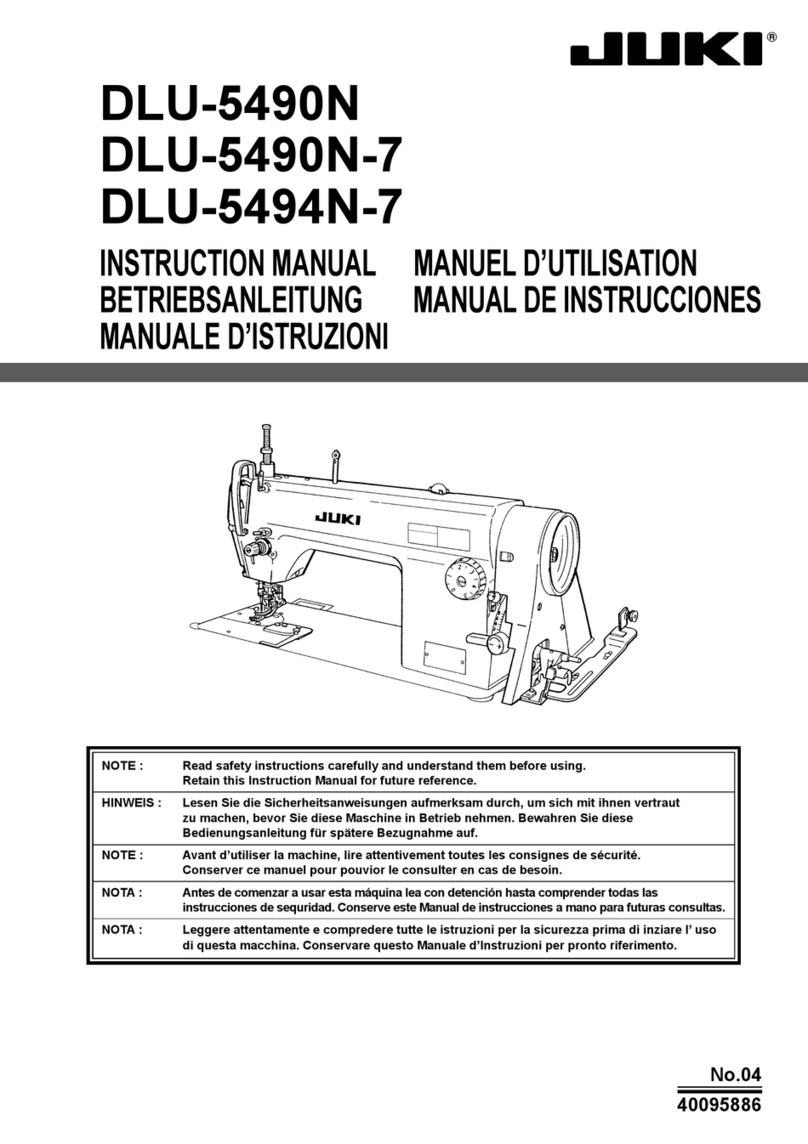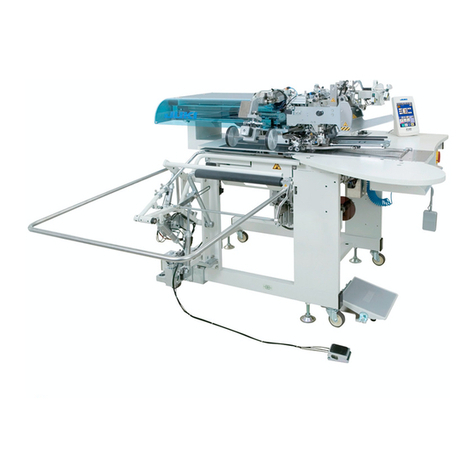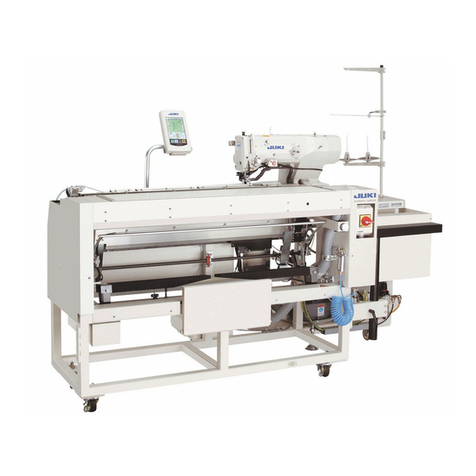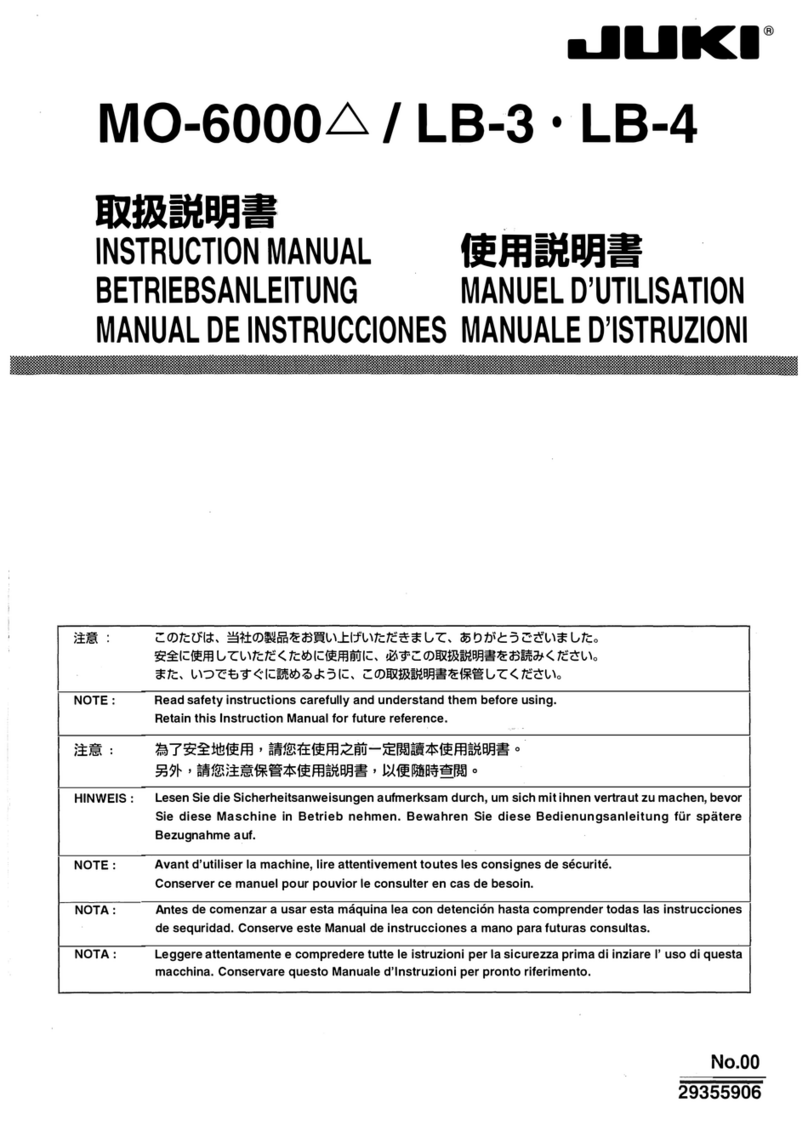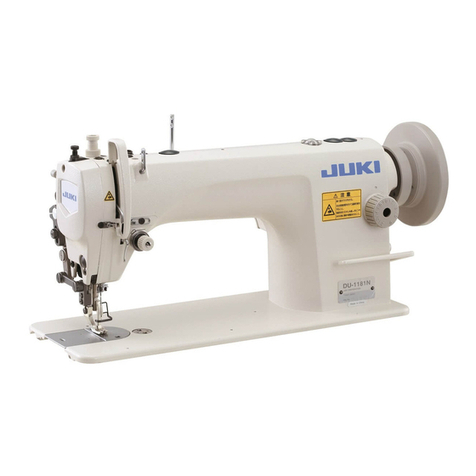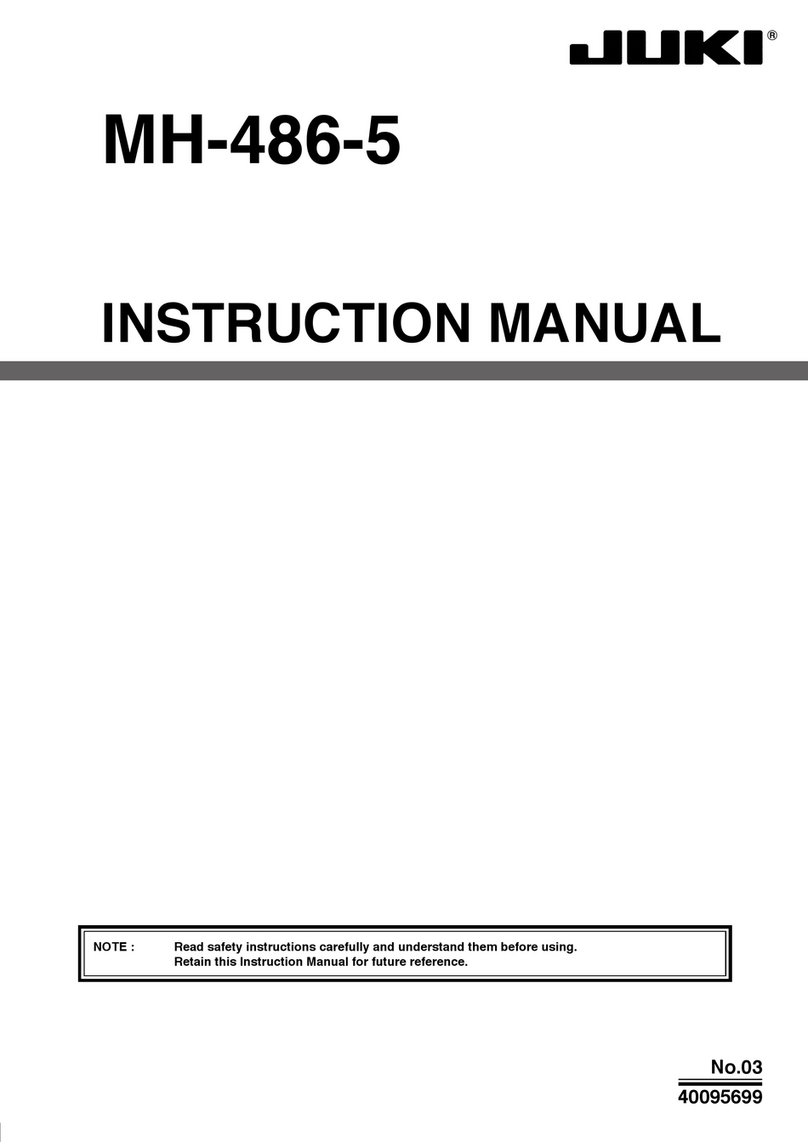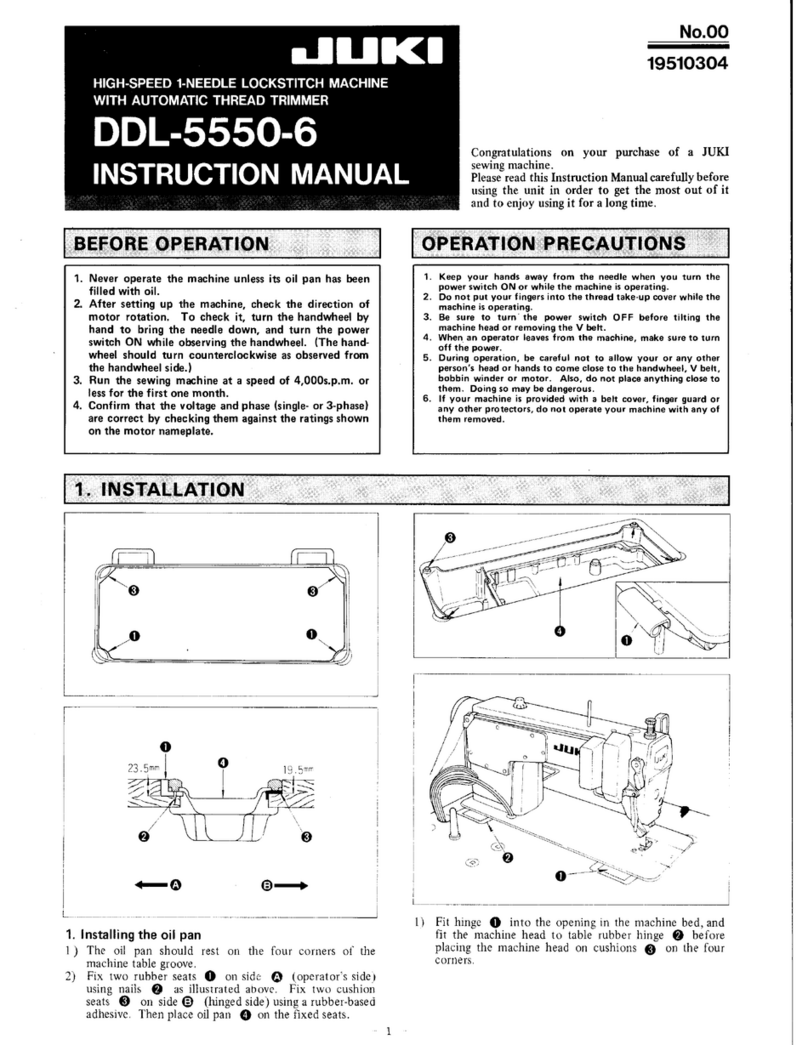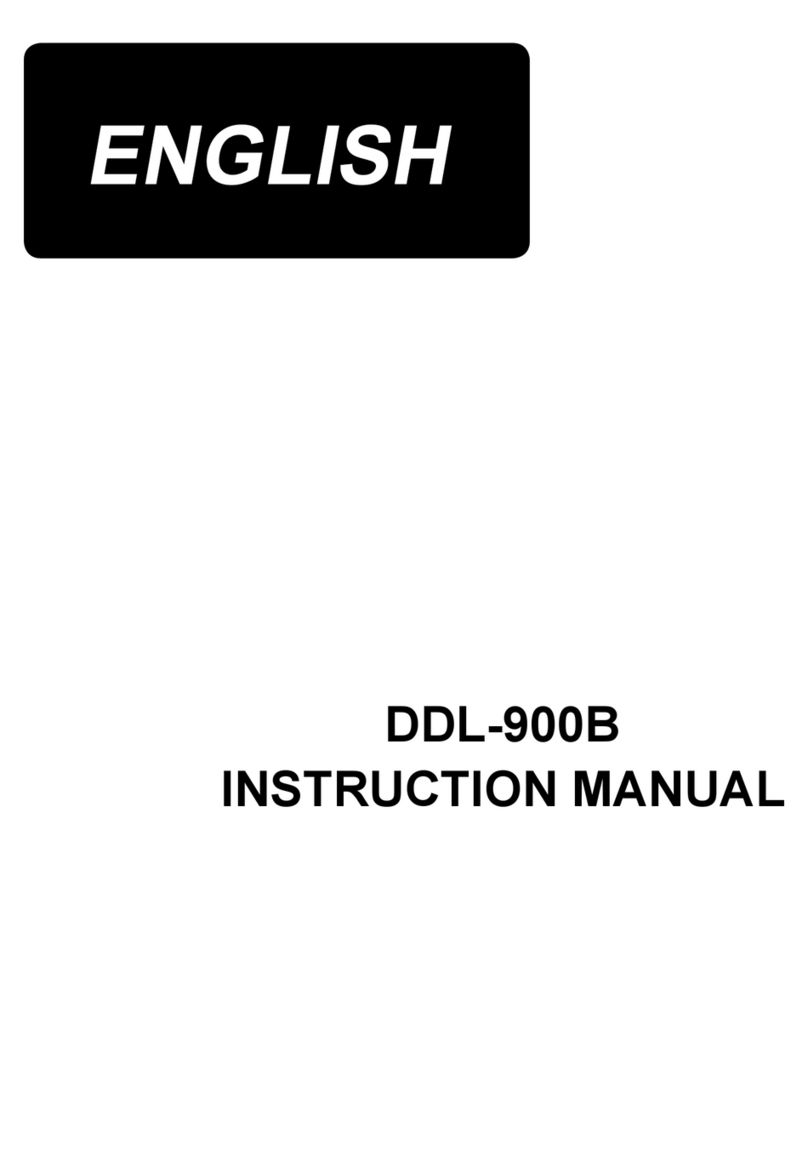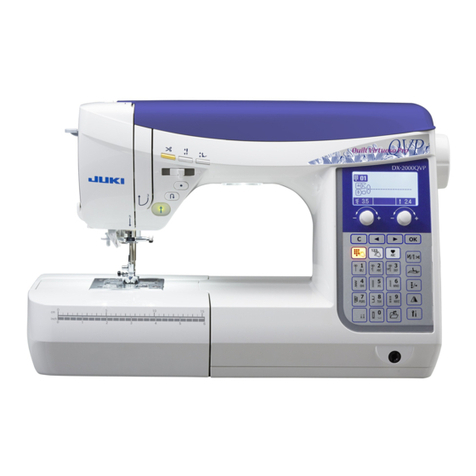
– 3 –
1. SPECIFICATIONS
1Sewing area (X,Y)(mm) 280 × 500
2Feed motion of feeding frame Intermittent feed (2-shaft drive by stepping motor)
3Needle bar stroke 30.7mm
4Max. sewing speed 3,500sti/min (When stitching pitch is 2.2 mm or less)
For other stitch pitches and numbers of revolutions, refer to Fig. 1.
5Settable stitch length 0.5 to 12.7 mm
6Needle DB × 1 #8 (#7 to #14)
7 Hook Standard full-rotary hook
8Intermediate presser stroke 4 mm (Standard)
9Lift of intermediate presser 12mm
10 Lift of disc presser 10mm
11 Memory of pattern data Max. 999 patterns
12 Number of patterns that can be identied Max. 999 patterns
13 Program input method USB
14 Data format DXF.AI.PLT.DST
15 Main shaft servomotor power 550W
16 Power consumption 500VA
17 Input voltage 220V ± 10%
18 Mass (gross mass) Standard type:293kg
19 Dimensions 1,470mm (W) × 1,150mm (L) × 1,310mm (H)
20 Operating temperature range 5 to 35℃
21 Operating humidity range 35 to 85% (No dew condensation)
22 Storage temperature range -5 to 60℃
23 Storage humidity range 10 to 85%((No dew condensation, 85 % applies to the case where the tem-
perature is 40 ˚C or lower)
24 Air pressure used 0.5 to 0.6 MPa
25 Needle highest position stop facility After the completion of sewing, the needle can be brought up to its highest
position.
26 Noise - Equivalent continuous emission sound pressure level (LpA) at the worksta-
tion :
A-weighted value of 78.0 dB ; (Includes KpA = 2.5 dB) ; according to ISO
10821- C.6.2 -ISO 11204 GR2 at 2,800 sti/min.
27 Lubricating oil #10 (Equivalent to JUKI NEW DEFRIX OIL No. 1)
#32 (Equivalent to JUKI NEW DEFRIX OIL No. 2), Lithium based grease No. 2
Grease information
Manufacturer: WERATCHE
Type and number: Lithium base 2# grease
Stitch pitch and the sewing speed
Number Stitch pitch Sewing speed Remarks
1 2.8 mm 2,800 sti/min
23.0 mm 2,500 sti/min
34.0 mm 2,200 sti/min
45.0 mm 1,800 sti/min
Note: The sewing machine must not run at the maximum
number of revolutions continuously for more than 15 min-
utes. The number of revolutions may vary even if the pitch
is consistent due to the change in the needle and material.
Fig. 1
